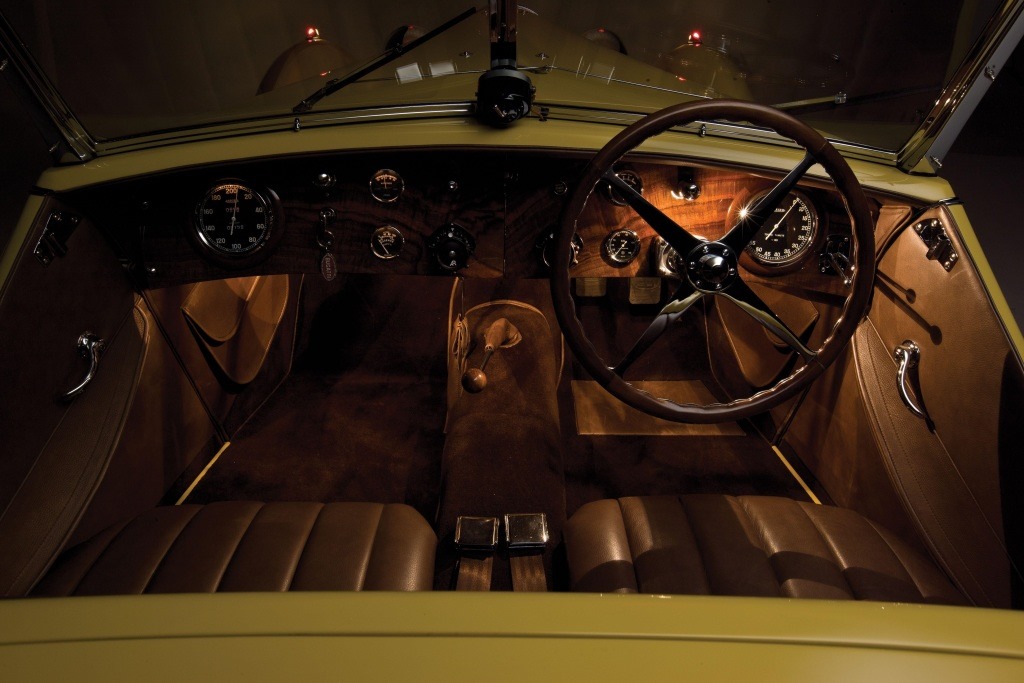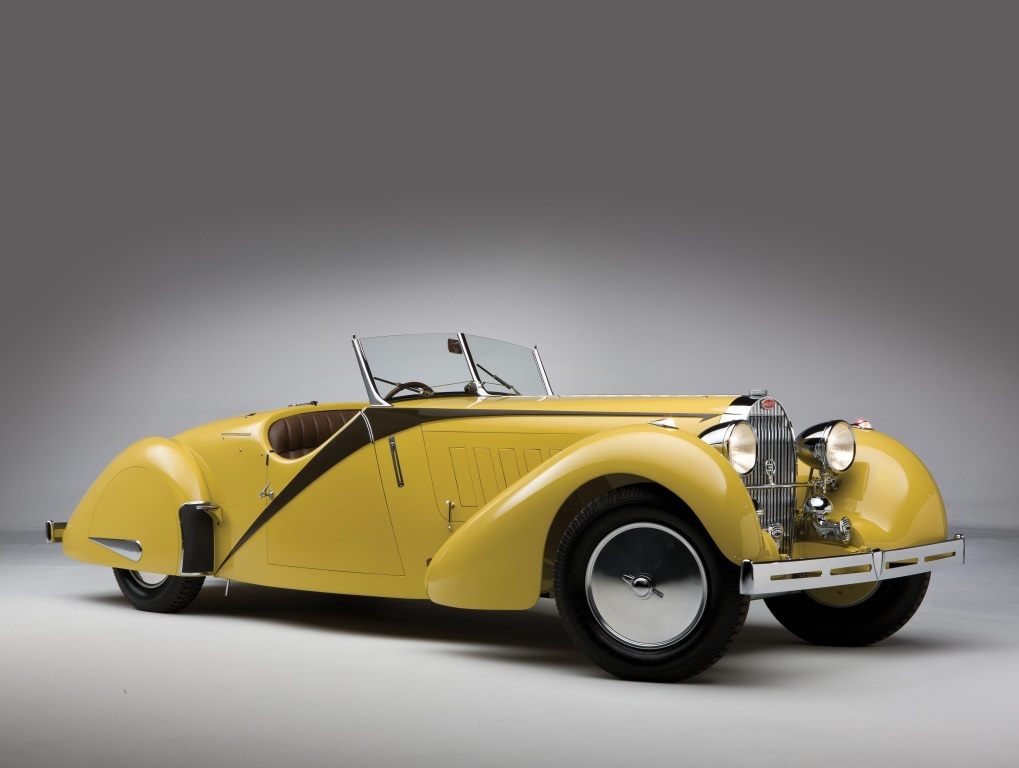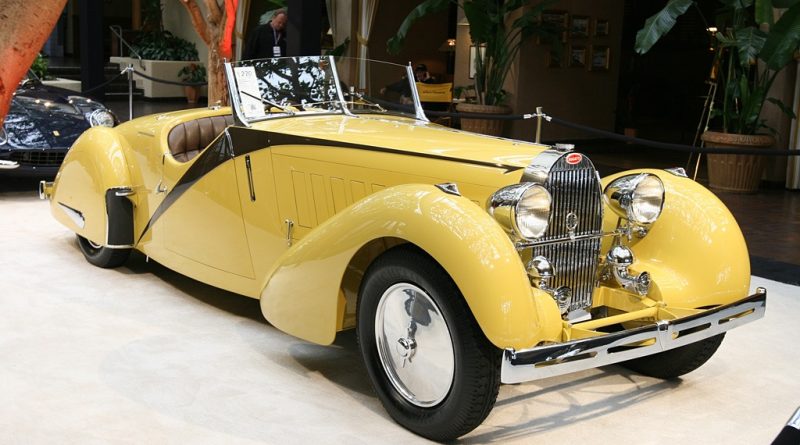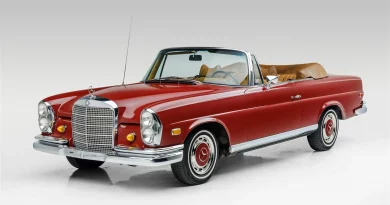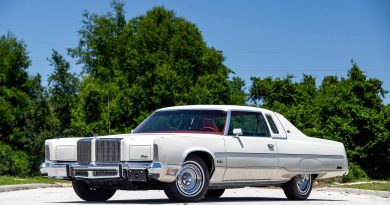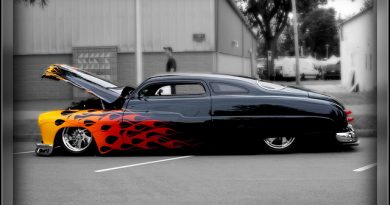1935 Bugatti Type 57 Grand Raid Roadster
Many manufacturers during this time produced multi-purpose vehicles that could be driven to a race track, raced, and then driven home. The Bugatti Type 57, however, was solely a road-going vehicle and is considered the most celebrated of all non-racing Bugattis. Even though the Type 57 was strictly a road-going vehicle, a racing version was created for the 1937 24-Hours of Le Mans race. This vehicle, based on the Type 57S chassis and named the 57G, won the race. A supercharged version was created for the 1939 Le Mans race and also was victorious. This is the legacy of the Bugatti heritage and the quality and innovative designs that were truly masterpieces in all respects.
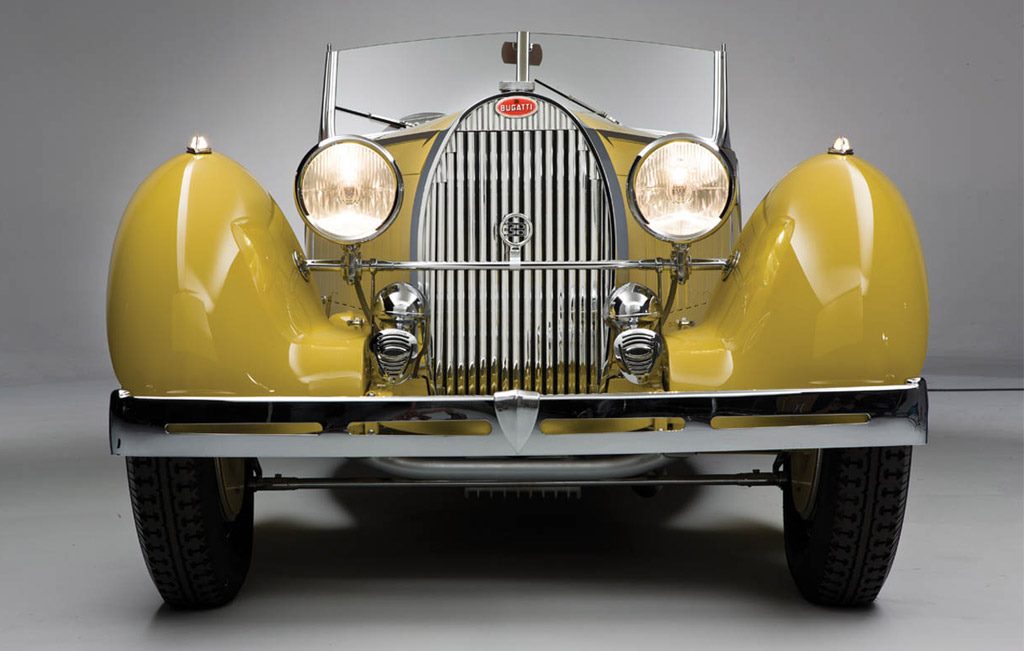
A 3.3 liter, twin-cam, straight-eight engine was used to power this vehicle. Even with the heavy saloon bodies, the engine could propel the vehicle to a speed of around 95 mph. A Roots-type supercharger was later added and the vehicle was given the designation 57C. The supercharger was quiet and provided between three to four pounds of boost pressure. The addition of the supercharger increased the horsepower rating to 175.
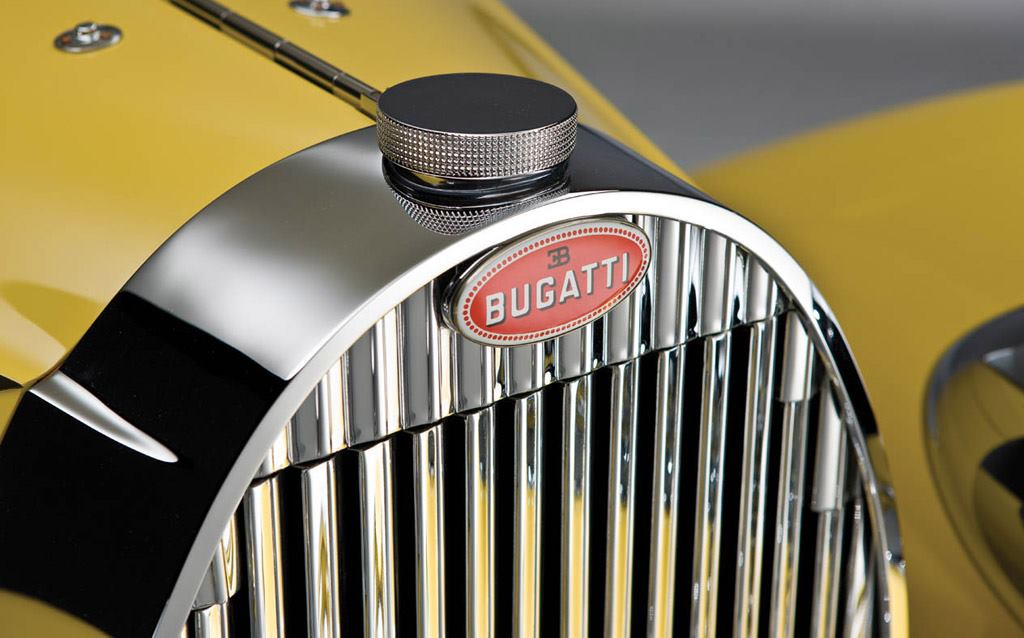
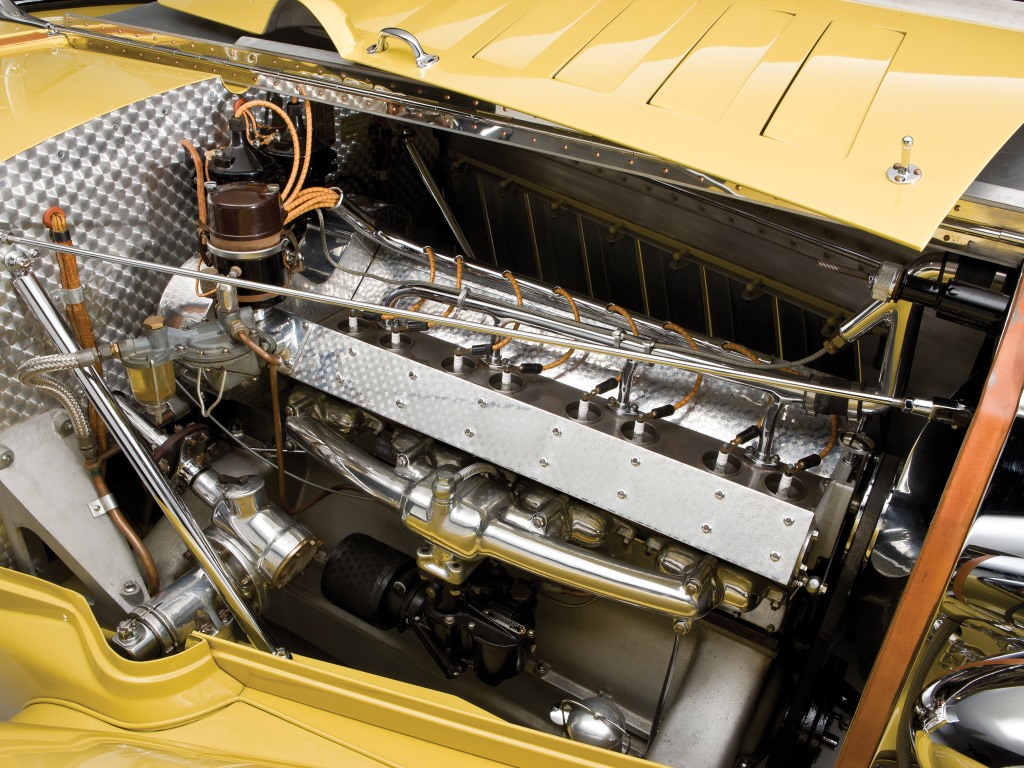
The Type 57S version was a ‘sportier’ version of the Type 57. The chassis was shorter, with the rear axle running through the frame. A slightly tuned engine with higher compression and a dry sump lubrication helped increase the performance of the car. The front and rear axles received de Ram shock aborbers, replacing the Hartford Friction dampers.
The Type 57SC was a combination of the 57C and 57S. The engine produced between 200 and 220 horsepower.
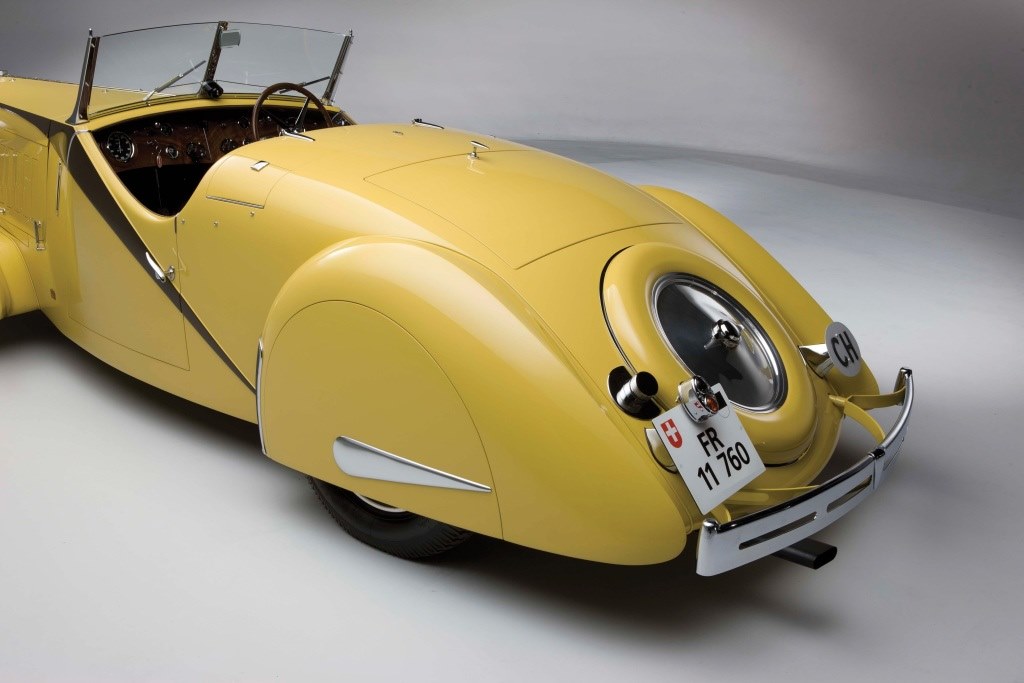

To move the driver further backward on the chassis, Bugatti modified the steering column angle and this became the distinct feature of nine more production models to follow. Naturally, the gear lever, handbrake, pedals and dashboard mounts were also extended.
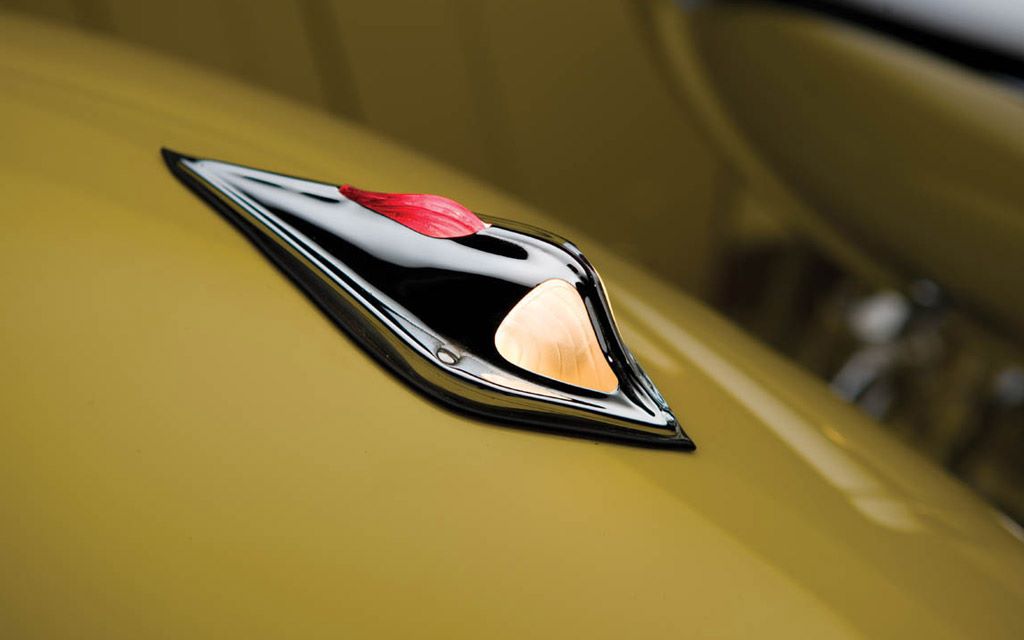
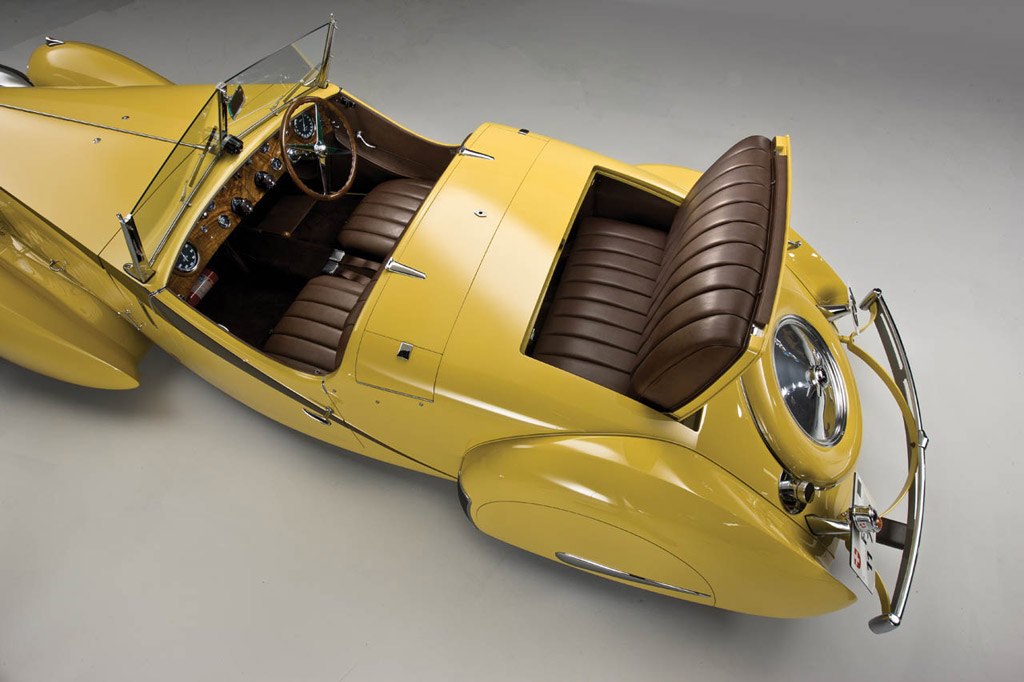
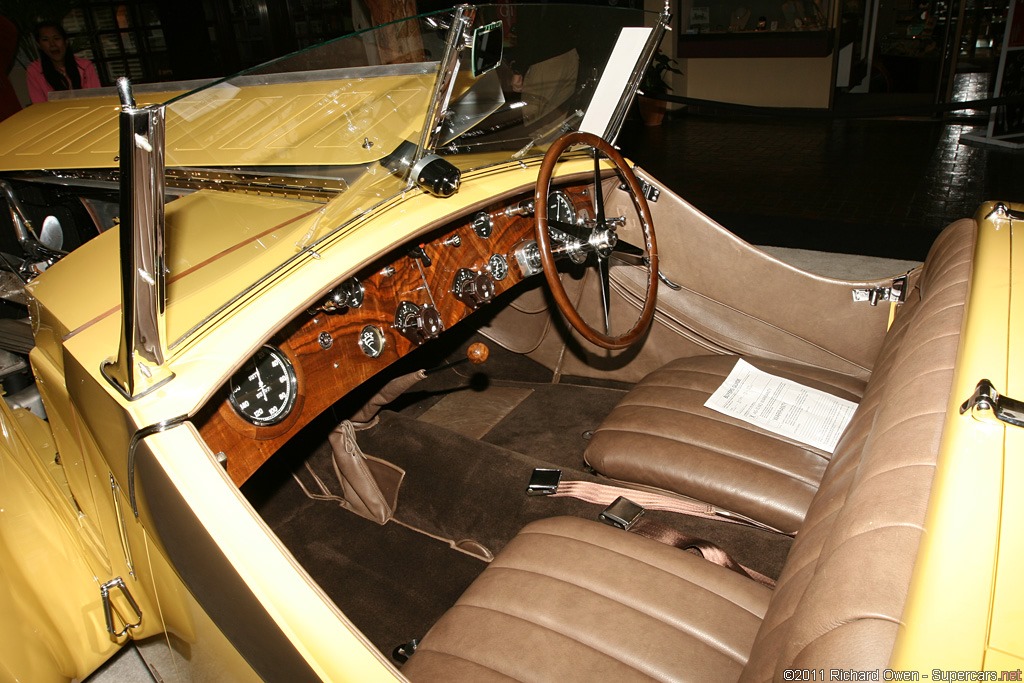
Jean designed an indepenent front suspension to aide in the handling of the vehicle. This was not popular with Ettore Bugatti and had the traditional Bugatti front axle installed.
